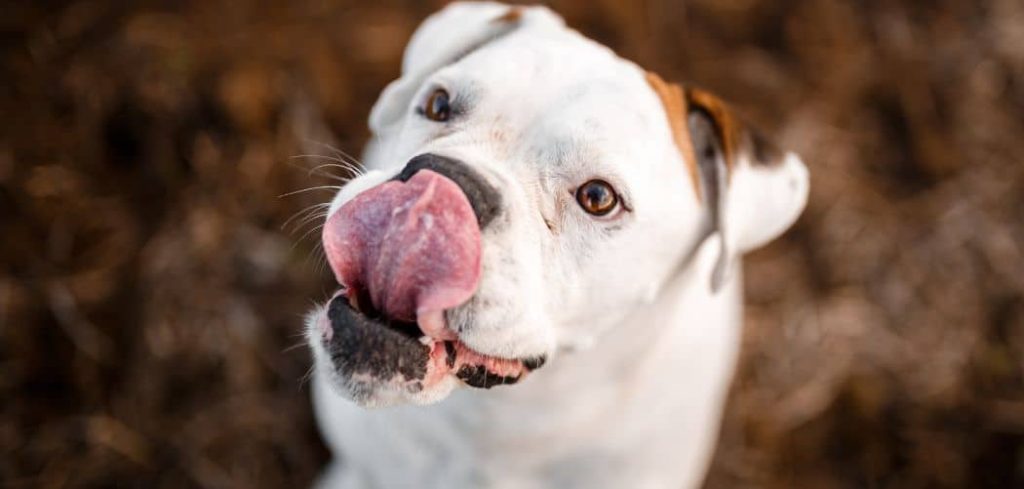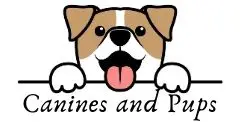If your dog is barking excessively and refusing to eat, it can be distressing and confusing. These symptoms may indicate behavioral, medical, or environmental issues.
We outline the possible causes of dog barking and not eating, what these symptoms could mean, and when it’s time to seek veterinary help.
Dog Licking and Not Eating: What It Means
Dog barking is a normal part of communication, used to express excitement, anxiety, fear, hunger, or alertness. However, excessive barking coupled with not eating is a red flag. It often signals that something more serious may be going on.
Loss of appetite, also known as inappetence, can be triggered by a wide range of factors including stress, illness, changes in environment, or dental problems. When these two symptoms—dog barking and not eating—occur together, it is often a sign of discomfort, pain, or emotional distress.

Common Causes of Dog Licking and Not Eating
1. Nausea and Gastrointestinal Upset
One of the most common reasons for dog licking and not eating is nausea.
Just like humans, dogs feel queasy when their stomach is upset.
They may lick their lips or objects around them as a response to the discomfort.
Signs of nausea in dogs include:
Licking lips or surfaces
Drooling
Eating grass
Vomiting or gagging
Refusing food
Dogs experiencing gastrointestinal issues such as gastritis, acid reflux, or inflammatory bowel disease (IBD) may show both signs—licking and a lack of appetite.
If your dog’s licking is accompanied by vomiting, diarrhea, or bloating, seek veterinary help immediately.
Related: Dog diarrhea and not eating (Explained)
2. Pain or Discomfort
Pain is another major reason for dog licking and not eating. Dogs instinctively try to comfort themselves through licking.
For example, a dog might lick a sore limb or paw, or even lick the air if they’re in internal pain.
Common sources of pain include:
Arthritis
Injuries or wounds
Internal organ issues
Oral pain
If your dog is licking a specific area of their body and also refusing to eat, consider that they may be injured or in discomfort.
Dogs in pain may also become lethargic, withdraw socially, or whimper.
3. Dental Problems
Dental disease is a frequent yet overlooked cause of dogs not eating and licking excessively.
Tooth pain, inflamed gums, or loose teeth can make eating uncomfortable or painful, leading to food avoidance.
Dogs with dental issues may:
Drop food while eating
Chew on one side of the mouth
Lick their lips or paws frequently
Show foul breath (halitosis)
Schedule a vet exam if your dog’s licking behavior is new and they’re not eating.
Dental cleaning or tooth extraction may be necessary.
Related: Dog barking and not eating (Explained)
4. Nausea from Medications
Certain medications, especially antibiotics, pain relievers, or anti-inflammatory drugs, can lead to nausea and loss of appetite.
These side effects may cause your dog to lick excessively and stop eating.
If your dog starts licking and refusing food after starting a new medication, consult your vet to determine whether the drug needs to be adjusted or changed.
5. Foreign Object Ingestion
Dogs are curious creatures and may swallow non-food items such as toys, fabric, plastic, or bones.
If a foreign object becomes stuck in your dog’s digestive tract, it can cause discomfort, licking behaviors, and refusal to eat.
Signs of a possible foreign body include:
Vomiting or retching
Licking lips or the air
Restlessness
Loss of appetite
Abdominal pain
This situation can be serious and may require surgical intervention, so prompt veterinary care is essential.
Related: Dog limping and not eating (Explained)
6. Stress and Anxiety
Just like people, dogs can develop stress-related symptoms. One way they self-soothe is by licking objects, paws, or their lips.
If your dog is licking excessively and has stopped eating, consider whether they are anxious or depressed.
Causes of dog stress include:
Separation anxiety
New environments or changes in routine
Loud noises (e.g., fireworks or thunder)
Introduction of new pets or family members
In these cases, dog licking and not eating may be accompanied by pacing, hiding, whining, or destructive behavior.
Addressing the root cause of stress and offering reassurance or behavior modification can help.
7. Poisoning or Toxin Ingestion
Toxin ingestion is a serious medical emergency that can lead to a variety of symptoms—including excessive licking and refusal to eat.
Toxins such as cleaning chemicals, certain human foods (e.g., chocolate, xylitol), or plants can irritate your dog’s system and cause:
Vomiting
Diarrhea
Excessive salivation
Lethargy
Trembling
If you suspect poisoning, seek emergency veterinary help immediately.
8. Liver or Kidney Disease
Systemic diseases such as liver or kidney dysfunction can manifest as a dog licking compulsively and not eating.
These conditions affect the body’s ability to filter waste and toxins, often causing nausea and decreased appetite.
Dogs with liver or kidney disease may also show:
Yellowing of eyes or gums
Increased thirst or urination
Vomiting
Weakness
Routine blood work can help identify these conditions early.
9. Food Aversion or Dietary Changes
Sometimes a dog may stop eating due to food aversion or a sudden change in diet.
If they don’t like the taste or texture, they may refuse to eat and start licking objects or the floor as a displacement behavior.
Try switching back to the previous food or gradually introducing new food to avoid gastrointestinal upset and ensure continued interest in meals.
Dog Licking and Not Eating: When to Worry
While the occasional skipped meal or a bit of floor licking may not be cause for alarm, you should be concerned if:
Your dog hasn’t eaten for more than 24 hours
Licking behavior becomes obsessive
Vomiting or diarrhea occurs
Signs of pain or bloating are present
Lethargy, shaking, or collapse occurs
Puppies, seniors, and dogs with existing health conditions are at greater risk and should be seen by a vet immediately if they refuse food or exhibit unusual behavior.
What to Do if Your Dog is Licking and Not Eating
Here’s how you can respond if your dog is licking excessively and not eating:
Monitor closely – Note any additional symptoms such as vomiting, diarrhea, drooling, or lethargy.
Avoid offering new treats or human food – This can upset your dog’s stomach further.
Ensure access to fresh water – Even if they’re not eating, hydration is vital.
Try a bland diet – In cases of mild stomach upset, boiled chicken and rice may help encourage eating.
Limit stressors – Create a calm environment and maintain a consistent routine.
Contact your vet – If symptoms persist for more than 24 hours or worsen, schedule an exam.
Key Takeaway: Why Dog Licking and Not Eating Happens
Dog licking and not eating are signs that should never be ignored.
While they can result from something mild like an upset stomach or stress, they could also indicate serious health problems such as nausea, pain, dental disease, poisoning, or systemic illness.
If your dog’s behavior changes suddenly or continues for more than a day, it’s best to consult your veterinarian to identify and treat the root cause.
By being attentive to early symptoms, you can help your dog recover faster and maintain their overall well-being.
